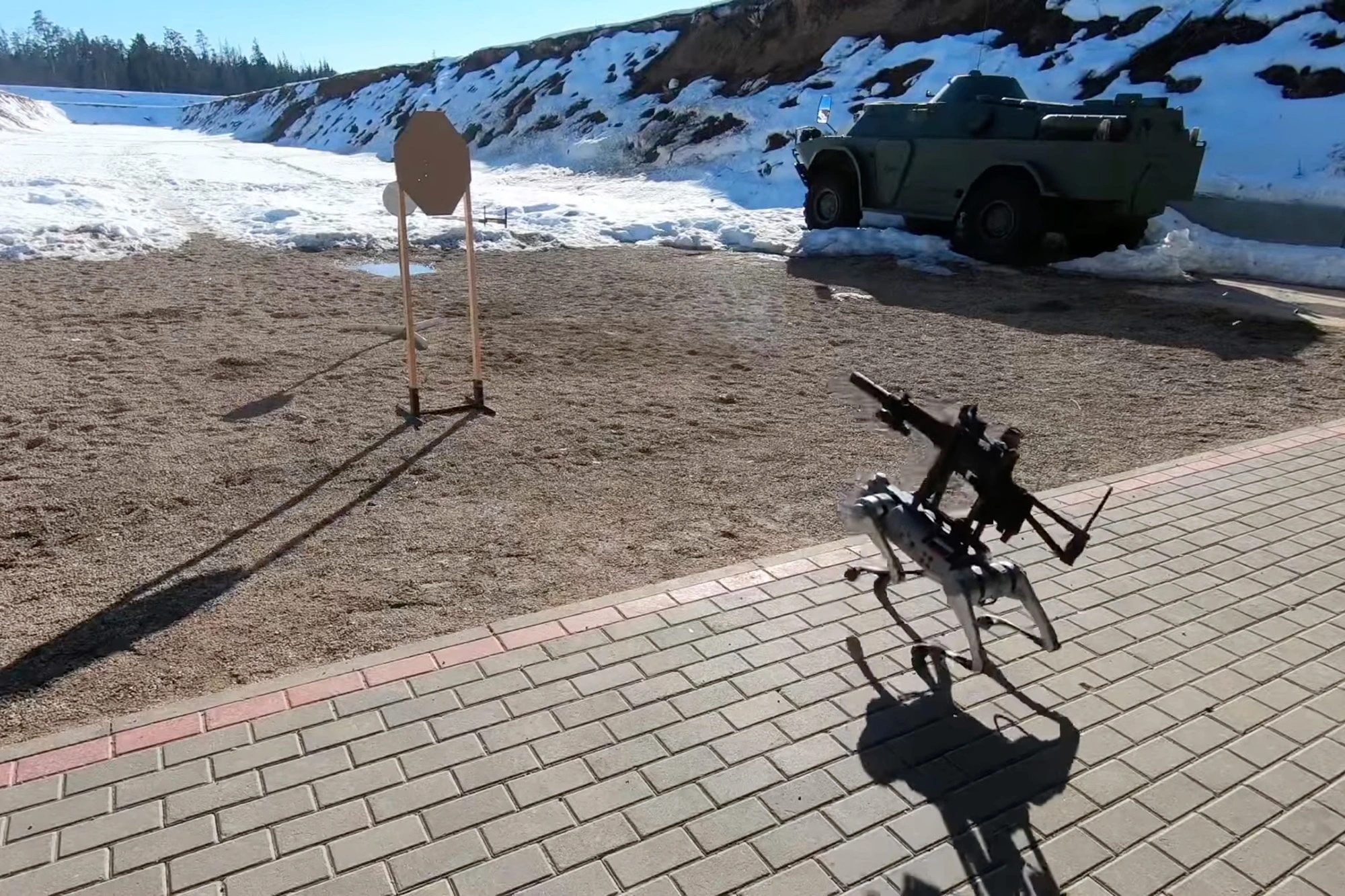The United States Marine Forces Special Operations Command (MARSOC) is currently evaluating a new generation of robotic "dogs" developed by Ghost Robotics, with the potential to be equipped with gun systems from defense tech company Onyx Industries, reports The War Zone.
While MARSOC is testing Ghost Robotics' quadrupedal unmanned ground vehicles (called "Q-UGVs" for short) for various applications, including reconnaissance and surveillance, it's the possibility of arming them with weapons for remote engagement that may draw the most attention. But it's not unprecedented: The US Marine Corps has also tested robotic dogs armed with rocket launchers in the past.
MARSOC is currently in possession of two armed Q-UGVs undergoing testing, as confirmed by Onyx Industries staff, and their gun systems are based on Onyx's SENTRY remote weapon system (RWS), which features an AI-enabled digital imaging system and can automatically detect and track people, drones, or vehicles, reporting potential targets to a remote human operator that could be located anywhere in the world. The system maintains a human-in-the-loop control for fire decisions, and it cannot decide to fire autonomously.
On LinkedIn, Onyx Industries shared a video of a similar system in action.
In a statement to The War Zone, MARSOC states that weaponized payloads are just one of many use cases being evaluated. MARSOC also clarifies that comments made by Onyx Industries to The War Zone regarding the capabilities and deployment of these armed robot dogs "should not be construed as a capability or a singular interest in one of many use cases during an evaluation." The command further stresses that it is aware of and adheres to all Department of Defense policies concerning autonomous weapons.





 Loading comments...
Loading comments...

I know this won't being much comfort to anyone, but the article didn't specify LLMs. There are object segmentation and decision making algorithms that aren't stochastic neural networks.
The video AI has been around in open source machine vision (or at least open source vision libraries + university research dataset) for at least 15 years. Similarly the kinematics math for aiming a gun has been around as long as the attack helicopter with the front mounted cannon.
A single board computer with nVidia Tegra could have powered the necessary compute without needing too much unreliable cooling or big batteries.
Boston Dynamics did some trials of their bigger legged robots with the marines many years ago, and the end conclusion was that they were too loud to be useful: US marines reject BigDog robotic packhorse because it's too noisy . There are some niches where a land robot makes sense, like bomb disposal, and there will probably be people who are convinced to get legged robots in spite of their unsuitability, but there's good reasons why legged robots are still doing trials and quadcopters are actively being used in warfare.